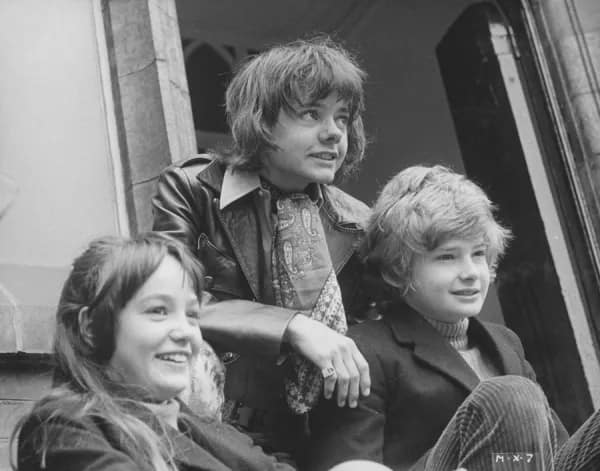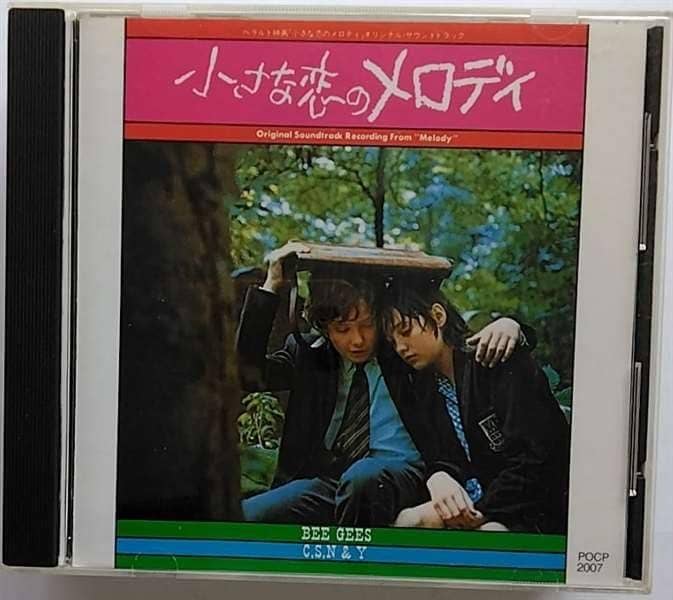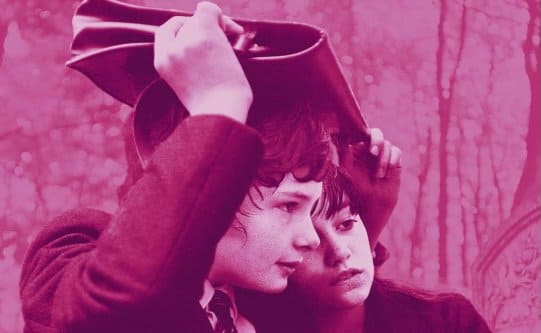In 1971, Melody slipped into theaters like a quiet kid at the back of class, unnoticed but unforgettable. This British coming-of-age tale, directed by Waris Hussein, captures young love’s raw, awkward beauty with a sincerity that feels alien in today’s cynical world. For us misanthropes who cherish pre-2000 cinema, it’s a bittersweet time machine to a simpler era.
A Late-Night Discovery
I first encountered Melody on a late Saturday night in the mid-to-late 1970s, huddled in front of the small pop-up TV in my bedroom. In those days, WPIX Channel 11 and WWOR-TV Channel 9 were portals to cinematic worlds, broadcasting eclectic fare in those midnight hours when the rest of the house slept. Between horror oddities like “Straight on til Morning,” “The Asphyx,” “Dr. Jekyll & Sister Hyde,” and “The Death Wheelers” (all worthy of future blog entries), this tender British film about childhood love emerged like a delicate flower amid gothic thorns.
At the time, I was roughly the same age as the protagonists—perhaps a touch older—and found myself unexpectedly moved by their story. Mark Lester’s cherubic face was already familiar from “Oliver!” and the deliciously macabre “Whoever Slew Auntie Roo?”, but here he inhabited a character closer to my own reality. With its crystalline harmonies and melancholic undertones, the Bee Gees soundtrack seemed to capture something essential about the bittersweet transition from childhood to adolescence—that liminal moment when the world suddenly shifts into a new focus.
The Story
Daniel (Mark Lester) and Melody (Tracy Hyde) are London schoolkids who fall in love, defying their parents and teachers with a stubborn, innocent rebellion. Their plan to marry—yes, at age 11—leads to a chaotic, heart-tugging climax. It’s less about romance and more about the fierce authenticity of youth, set against a gritty 1970s London.
Why It Shines
- Realism: Shot on location, the film’s schoolyards and bomb-site playgrounds ooze authenticity.
- Soundtrack: The Bee Gees’ “To Love Somebody” and Crosby, Stills, Nash & Young’s “Teach Your Children,” gives it emotional heft.
- Freedom: The loose, naturalistic vibe reflects 1971’s bold filmmaking, unafraid to let kids be kids.
Behind the Scenes: A Cinematic Genesis
The film originated from an idea by producer David Puttnam, who approached Alan Parker to write a story around seven Bee Gees songs he had acquired the rights to. Parker drew inspiration from a line in “First of May,” and the film’s title came from the song “Melody Fair.” The screenplay blended Parker’s childhood experiences growing up in Islington with some of Puttnam’s own youth.
This collaboration marked Alan Parker’s first screenplay, launching what would become a legendary filmmaking career. Parker even handled some second-unit direction for the film, shooting the memorable montage sequences of schoolchildren during break time and on sports day. These candid moments of childhood exuberance provide the film’s emotional foundation.
The production reunited Mark Lester and Jack Wild, who had previously starred together in the 1968 musical adaptation of “Oliver!” Child model Tracy Hyde made her acting debut in the title role at just 11 years old, chosen after an extensive audition process in which over 100 girls were screened.

Filming began in May 1970 and took place over ten weeks, with location shoots in Hammersmith and Lambeth in Greater London. The graveyard scenes were filmed at Brompton Cemetery and Nunhead Cemetery, while the seaside scenes were shot in Weymouth, Dorset. This authentic urban landscape provides the perfect backdrop for a story about children claiming their independence.
Musical Magic
The film’s soundtrack features songs by the Bee Gees including “In the Morning” (later retitled “Morning of My Life”), “Melody Fair,” “Give Your Best,” and hit singles “To Love Somebody” and “First of May,” alongside Crosby, Stills, Nash & Young’s “Teach Your Children.” This emotionally resonant score became as beloved as the film itself, reaching #1 on the Japanese charts.

Music plays a crucial role in the film, with the songs woven organically into the narrative. Similar to the use of Cat Stevens in “Harold & Maude” and Simon & Garfunkel in “The Graduate,” the music in Melody produces much of the sentiment that courses through the proceedings, enhancing the tender story of two schoolchildren falling in love.
As a young viewer entranced by the early, pre-disco Bee Gees sound, the soundtrack felt transcendent—these weren’t just songs playing beneath a film but emotional currents carrying the story forward. The Brothers Gibb had an uncanny ability to capture melancholy and hope in equal measure, perfect for a film balanced on childhood’s edge.
Cult Status: From Box Office Flop to Beloved Classic
While Melody initially disappointed at the box office in both the US and UK, it became a surprise hit in Japan and several Latin American countries including Mexico, Argentina, and Chile. Over the decades, it has evolved into a genuine cult classic with passionate admirers worldwide.
Wes Anderson has called Melody “a forgotten, inspiring gem” and used it as direct inspiration for his film “Moonrise Kingdom.” Anderson even showed Melody to his young actors during production. Mexican director Alfonso Cuarón has cited the film as the inspiration for his decision to become a filmmaker.
Since its original release in 1971, Melody has been seen worldwide and has become a beloved favorite among those who discover it, often through word of mouth or passionate recommendations. Fan testimonials frequently describe watching the film multiple times, tracking down rare copies, and even visiting filming locations decades later.
My own memory of discovering it during those late-night channel-surfing sessions speaks to how the film often found its audience through serendipity rather than marketing—stumbled upon rather than sought out, yet leaving an indelible impression.
Why It Still Resonates
The film captures universal childhood experiences that still resonate today: kids goofing around in cemeteries, desperately holding back laughter during boring lessons, and experiencing those indescribable feelings when your heart zeroes in on that one person at school. It’s about that pivotal moment in life when childhood certainty confronts adult complexity.
Melody presents a world where children’s perspectives and emotions are treated with rare dignity and understanding. The adults, meanwhile, are portrayed as often oblivious or antagonistic to the children’s authentic feelings—a perspective that still feels refreshingly honest.
Where to Watch
After years of limited availability, Melody has been released on Blu-ray and DVD as part of Studiocanal’s Vintage Classics Collection, complete with special features including interviews with David Puttnam, Alan Parker, Waris Hussein, and Mark Lester. Digital versions are also available via streaming platforms.
Final Take
Melody is a middle finger to adulthood’s rules, wrapped in a tender story. It’s the kind of film we GenXers and Boomers wish we’d seen as kids, but love even more now. In a world obsessed with cynicism and irony, its genuine heart and belief in childhood stand as a quiet rebellion of its own.
For me, it remains inextricably linked to those formative late-night viewing sessions when cinema felt like a secret language—a transmission from another world received when the rest of the house was dark. Like many who stumbled upon this unheralded gem, I carried it with me through the decades, its emotional resonance only deepening with time. Perhaps that’s why it continues to find devoted new audiences five decades after its release—some films simply refuse to fade away, no matter how quietly they arrived.

Leave a Reply